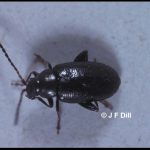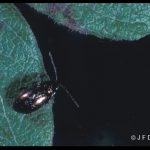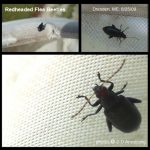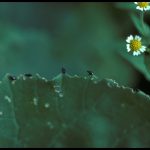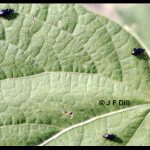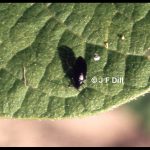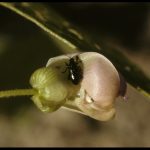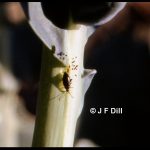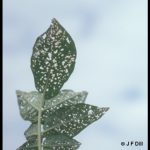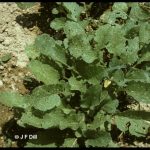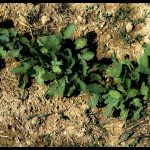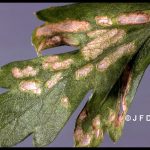Flea Beetles
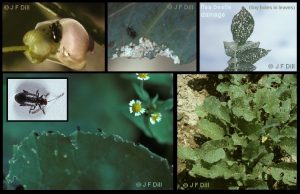
Flea beetles is a generic name for an entire class of leaf beetles in the family Chrysomelidae which, as their name implies, have the ability to jump, by virtue of their greatly enlarged hindlegs. Overall they are not very large in size (described as small to moderately-sized, ranging from 1.5 to 4 mm typically). Flea beetles can also walk normally and fly as well. Many are striking in their coloration, with most species being dark, shiny and metallic. The adult beetles feed externally on leaves, stems and petals, and their feeding causes characteristic round ‘shotgun’ holes that, under heavy feeding (heavy populations), will intersect with other holes, resulting in larger areas of damage to the plant. Some flea beetle larvae are root feeders.
As far as their relationship with humans, not all flea beetles are pests (some are beneficial); it depends on the species. Many agricultural crops and garden plants, however, are attacked by flea beetles, and they thrive during periods of dry, sunny weather. Some examples of specific flea beetles that are known agricultural pests include: red-headed flea beetle, blueberry flea beetle, crucifer flea beetle, cabbage flea beetle, eggplant flea beetle, horseradish flea beetle, pale-striped flea beetle, potato flea beetle, spinach flea beetle, and striped flea beetle.
- Cabbage Flea Beetle (Phyllotreta albionica)
-
Blueberry Flea Beetle
(Altica sylvia Malloch)
- Red-headed Flea Beetle (Systena frontalis)
- Flea beetles (and feeding damage) on broccoli
- Red-headed Flea Beetles on a bean leaf
- Red-headed Flea Beetle on a bean leaf
- A Red-headed Flea Beetle on a bean blossom
- A Red-headed Flea Beetle
- Flea beetle feeding damage on a potato plant
- Flea beetle feeding damage on mustard
- Flea beetle feeding damage on radish
- Flea beetle feeding damage on parsley
Additional Photos and Information:
- Flea Beetles Management (University of Vermont Extension)
- Flea Beetles (University of Minnesota Extension)
- Flea Beetles (pdf) (Rutgers)

